
The Pashley Pennyis the companion model to the Parabike I wrote about earlier. This unusual bicycle looks vaguely old-fashioned, but unlike the Parabike it is not based on a specific vintage design. Part cruiser, part mixte and part mountain bike, its uniqueness is enhanced by eccentricities such as the split curved downtubes. The Penny defies classification, and this seems to be how the manufacturer intends it - explaining that the bike "provides the perfect excuse to experience more rural rides."

While the Parabike's aesthetic is defined by the continuous curvature of its top set of twin stays, from head tube to rear dropouts, in the Penny the curve is interrupted and inverted. This difference is so visually dominant that it overshadows the structural similarities between the two bikes. The Penny also lacks the military/historical somberness of the Parabike, coming across as more light-hearted.
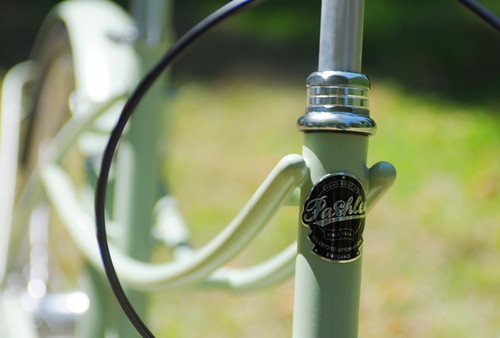
Made of cro-moly steel, the Penny is handbrazed and powdercoated in Stratford-upon-Avon in England, like all Pashley bicycles. It is fairly lightweight for its category of bikes, coming in at under 30lb.
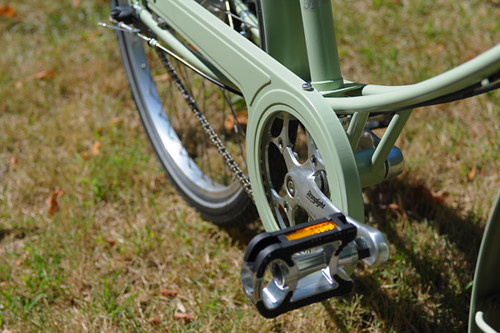
Like the Parabike, the Penny is built for 26" wheels and fitted with 26 x 1.75" Schwalbe Marathon tires.Colour-matched fenders and chainguard are included.

Components include a 5-speed Sturmey Archer hub, hand-operated hub brakes front and rear, a Brooks B67S saddle, a Stronglight crankset, non-slip platform pedals, rubbery "faux cork" grips, and a large bell.Unlike the Parabike, the Penny is set up with straight, rather than swept back, handlebars.
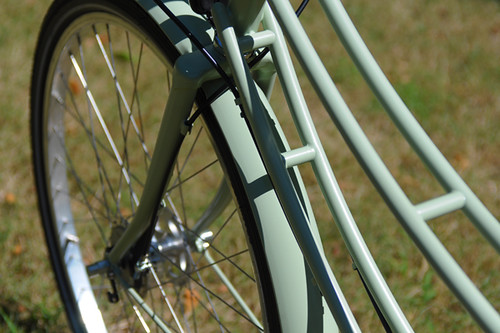
Standing over the bicycle for the first time, I was overwhelmed by all the flowy slender tubes; it was a bit like standing over a swaying rope bridge. Not that the tubes sway. It's the form and the repetition that give that impression of movement. A unique design to be sure.

One thing I had wondered about when seeing pictures of the Penny, was whether the stepover was low enough to be practical. Unlike a traditional mixte, the twin parallel stays here don't extend all the way down to the rear dropouts, but connect to the upper seat stays - which places them rather high. However, this is compensated for by their downward sweep. When mounting the bike, the stepover height resembles that of a typical mixte.
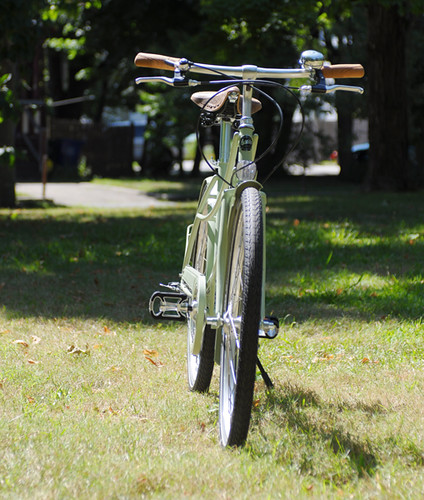
Riding the Penny, my first impression was that it felt too small for me (I am just under 5'7"). My test riding partner agreed that the Penny's "cockpit," even with the straight handlebars, felt smaller than the Parabike's. Later I looked up the sizes of the two bikes and was surprised to see them described as the same: 19" (48cm). Of course this measurement refers to the seat tube length, and it's possible that the Penny's virtual top tube is shorter than the Parabike's. Regrettably, I did not measure the bikes and have not been able to source geometry charts. But the good news is that the Penny will work well for smaller riders and those with shorter torsos.
Putting the fit issue aside, the ride quality and handling of the Penny felt very similar to that of the Parabike, which I liked very much: maneuverable, extremely cushy over bumps, mountain-bikey but with a relaxed cruiserish element to it.These are entirely different bikes from Pashley's Roadster and Princess line.Personally, I prefer the way the Penny and Parabike ride to the classic Princess. Of course the looks are a matter of taste.

One advantage of the Penny over the Parabike, is that - to my eye at least - its aesthetics do not conflict with a standard rear rack. So turning it into a practical city bike would be fairly simple. Unfortunately, dynamo lighting is not included. Also not included are the waterbottle cage mounts that I noticed on the Parabike. Step-through frame designs often do not lend themselves to this, and it's too bad. Finally, I am not sure why the Penny was set up with straight handlebars rather than swept-back bars - I suspect that much of this bike's target market would find the the latter more comfortable.
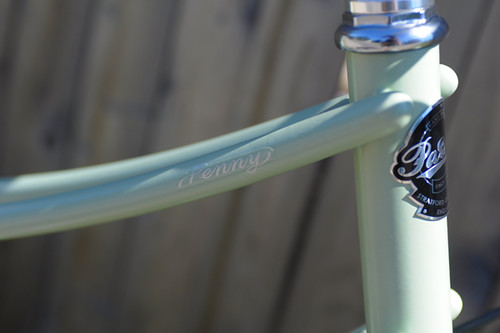
In their description of the Penny, Pashley suggests that this bike is meant to move effortlessly between town and country. I can see that. Provided that it's a fairly flat area, this bike could feel equally enjoyable to ride through meadows and forests, on cobblestones and on busy city streets, for shorter and longer distances. It is a nice combination of comfortable, maneuverable, and intuitive to handle. The durable powdercoat and the enclosed brakes and gears allow outdoor storage and make this bike a good choice for winter and inclement weather conditions. If the unique look of the Penny appeals to you, the bike is worth taking seriously.
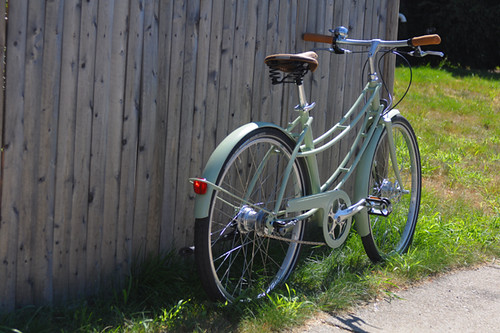
The Pashley Penny is available in "willow green" (shown here) or "dusk blue" - a dusty indigo. Current retail price is $1,195. Both the Parabike and Penny are available for test rides at Harris Cyclery in West Newton, MA. Many thanks to them for setting up these demo bikes.
No comments:
Post a Comment